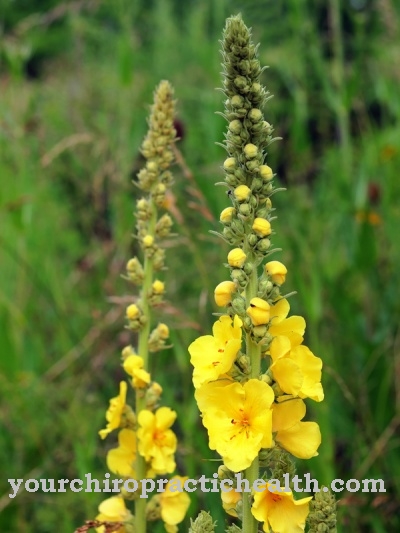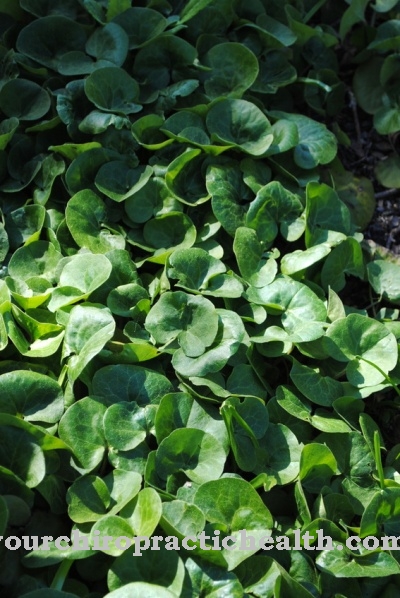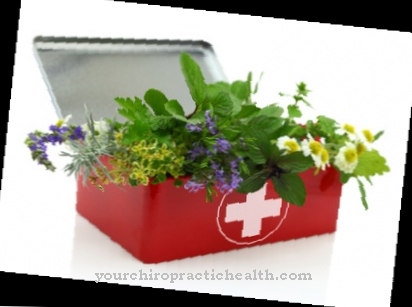Of the bulbous buttercups is a poisonous plant mainly found in Central Europe. It used to be recognized as a medicinal plant. Today, however, because of its toxicity, the bulbous buttercup is only used as a remedy in a highly diluted form, primarily in homeopathy.
Occurrence & cultivation of the bulbous buttercup

The bulbous buttercup is a perennial plant that grows persistent and herbaceous and is between 15 and 50 centimeters high. The hairy stem is thickened in the lower part, just below the surface of the earth, from which the first part of the name of the plant is derived. This tuber serves the buttercup to store nutrients and as a persistence organ. This allows the buttercup to survive dry and hot spells and periods of low nutrients.
The bulbous buttercup bears yellow flowers that consist of five petals and have a diameter of two to three centimeters. It blooms between May and July. After the seeds ripen, the stems and leaves of the bulbous buttercup quickly wither, allowing the plant to avoid dry summer and autumn months. The German name Hahnenfuß refers to the threefold, bird's foot divided leaves.
The bulbous buttercup occurs in large parts of Europe. It is particularly native to Central Europe, but can also be found in the southern part of Scandinavia, in the Ukraine and in the Middle East and in the North African Mediterranean area. The plant prefers calcareous, rather nutrient-poor soils and grows on meadows, fallow land, rocks and heaps. The plant is pollinated by insects.
Effect & application
All parts of the plant in the bulbous buttercup are poisonous. If the fresh plant is damaged, it forms a sap with the non-toxic substance ranunculin. Ranunculin is a glucoside that is converted into the poisonous alkaloid protoanemonin. Protoanemonin is a toxin that is found in all buttercups. It has a strong irritant effect on the skin and mucous membranes, so that external contact leads to reddening of the skin, itching and the formation of blisters. This is known as buttercup dermatitis.
These irritations can occur, for example, when walking barefoot over freshly mown meadows where the plant is found. When used internally, protoanemonin acts on the nervous system and causes a burning sensation in the mouth to vomiting and colicky stomach pain. It can lead to severe irritation of the stomach, intestines and kidneys. In addition, attacks of dizziness and, in severe cases, cramps or even paralysis can occur.
In the dried parts of the plant, however, the toxins are lost. The poisonous but unstable protoanemonine is converted into the non-toxic anemonine when the plant dries. Anemonine has an antispasmodic and pain reliever and can kill bacteria. Due to the toxic effects of high concentrations of the active ingredient protoanemonin, the plant is now mainly used in homeopathy. All plant parts of the fresh, blooming buttercup are used in the manufacture of the medicine.
In low doses, the bulbous buttercup can also be added to tea mixtures and, in addition to internal homeopathic use as globules, drops or injections, can also be applied externally, as a pad or envelope. Globules, drops and injection solutions are available in different potencies, i.e. in different dilution levels. The globules are taken one to three times a day, depending on their potency.
Importance for health, treatment & prevention
The bulbous buttercup has long been a recognized medicinal plant. The plant was already used as a laxative in ancient times and Hippocrates also used it as an abortive. In the 16th century, the bulbous buttercup was used against warts, chilblains and as a hair restorer, and in later centuries various forms of treatment can be found in folk medicine.
Nowadays the bulbous buttercup is used in homeopathy as a complex remedy, that is, together with other homeopathic medicinal products that are coordinated with one another and as a guide, the effect of which is supported by other homeopathic medicinal substances. Based on the Hahnemannian principle of homeopathy to heal similar things with similar things, the buttercup is used for various skin diseases but also for painful conditions.
Pain of various origins and itching are relieved and inflammation heals. Skin diseases in particular that are triggered by a virus, such as herpes zoster, chickenpox or herpes simplex, can be treated homeopathically with the bulbous buttercup. A homeopathic treatment for rheumatism, gout, burst pains due to colds and coughs or headaches due to temperature fluctuations is also possible through the pain relief.
In addition, homeopathic treatment with this plant can help with various other diseases and is used, for example, for hay fever, meningitis (meningitis), pleurisy (pleurisy) and neuralgia (nerve pain). In the case of neuralgia, the application in intercostal neuralgia (nerve pain in the intercostal area of the chest wall) should be mentioned in particular.
Other possible uses are general fatigue and exhaustion as well as fever attacks. In addition to its use as a medicinal substance, the bulbous buttercup is rarely used as an ornamental plant for beds and lawns.



























